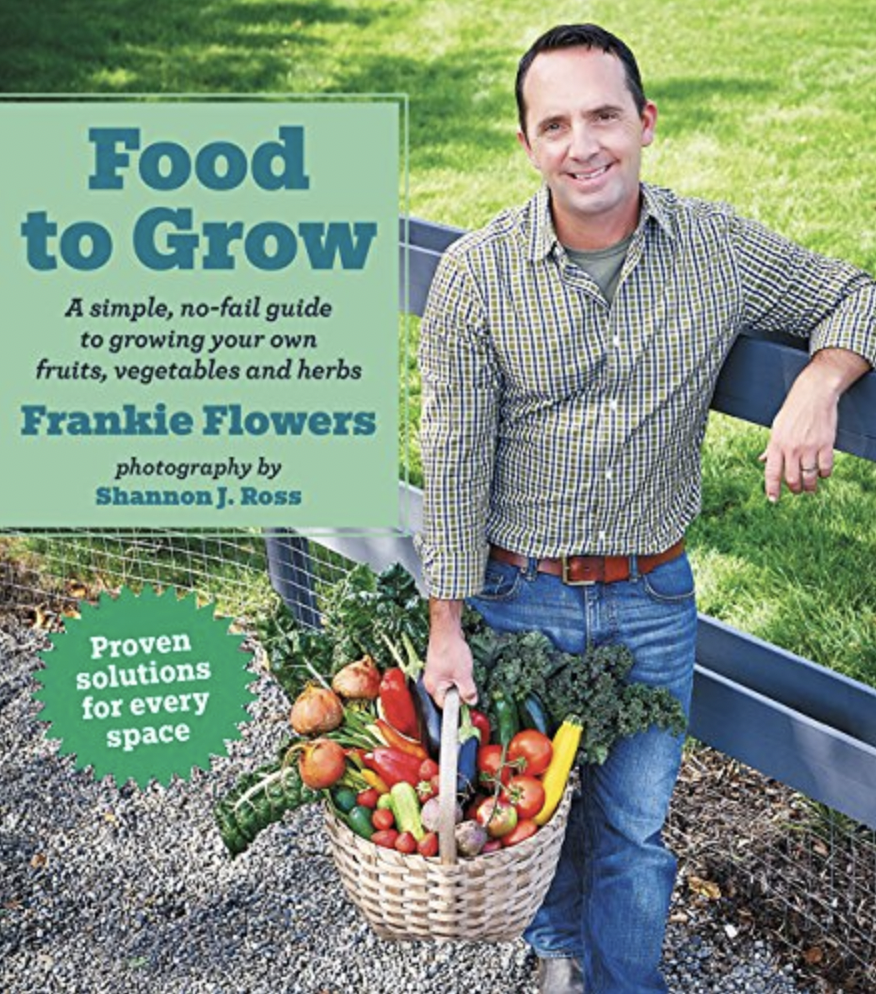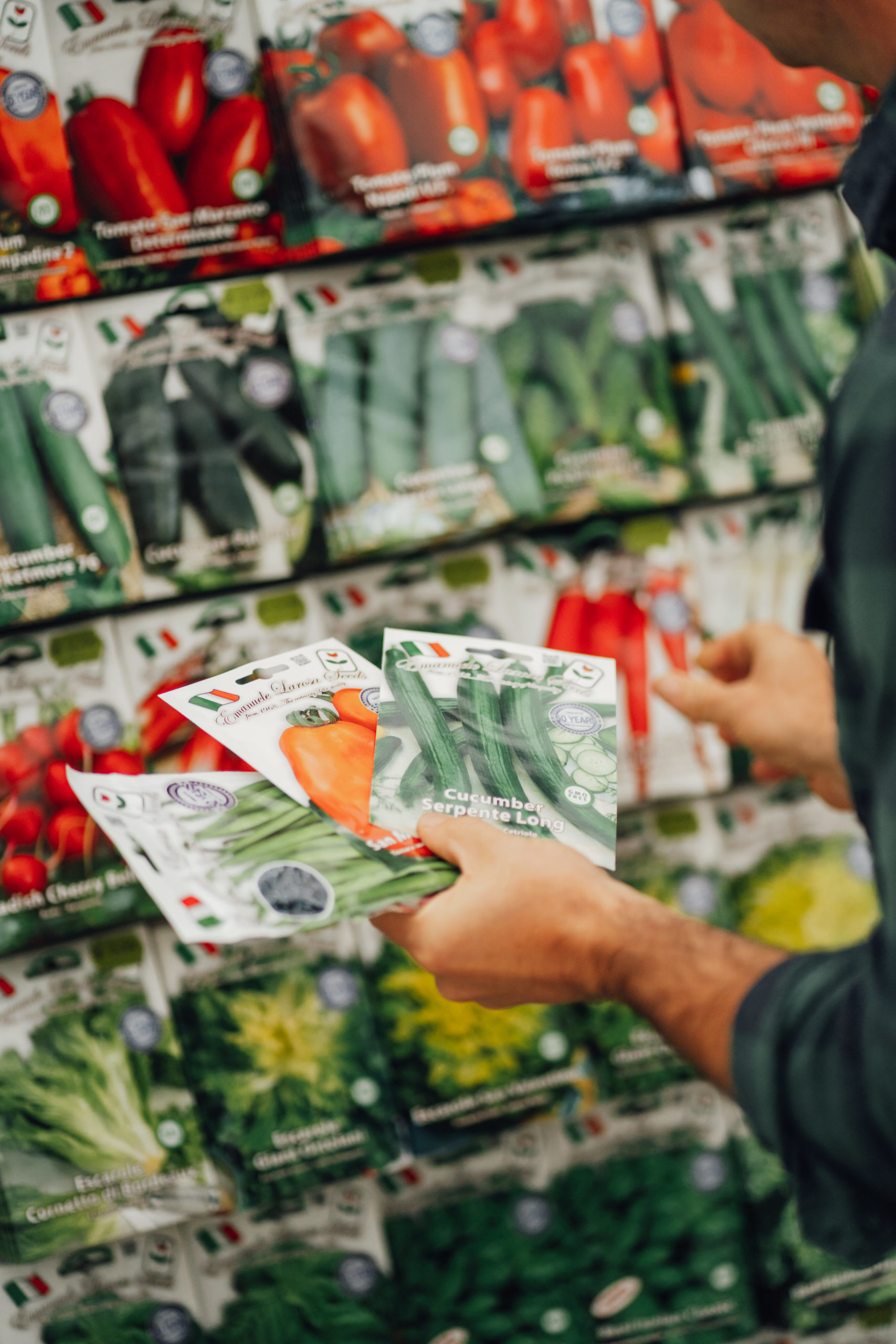Starting Vegetable Seeds Indoors and Out – Get the Jump on Spring!
Winter weather may not be over quite yet, but it’s time to start thinking about our vegetable gardens! Get the jump on Spring by starting seeds indoors for popular veggies such as tomatoes, beans, and cucumbers. If you’re new to seeds, here are a few tips, products, and methods to get you started so you can grow delicious food right in your backyard.

Questions to Ask Before Starting Vegetable Seeds
- How many plants do you need? (If you only need 2-3 tomato plants, you’re better off heading to the garden centre when it’s time to purchase)
- Do you have the time needed to care for your seeds?
- Do you have enough room to keep them in a warm place?
Supplies for Starting Seeds Indoors
Trays to hold soil
Reuse last year’s annual trays, grab egg cartons or clamshells from the recycling bin or try this starter kit).
Seed starting soil
Choose a soil formulated for germinating seeds such as Miracle-Gro Seed Starting Potting Mix.
Grow light
Once your seedlings pop through the soil, they need light. If you don’t have a lot of natural sunshine, a grow light can give your plants a boost.
Heating mat
When seeds are germinating, they need warmth and humidity. A heating mat helps set them up for success.
How to Start Seeds indoors
- Timing is everything! People often fail when germinating seeds because they start too early. Figure out when you can plant outside and work backwards to determine the right time to sow your seeds (generally 6-8 weeks before the last frost date).
- Fill trays with seed starting mix and moisten the soil.
- Follow package directions for the vegetables you’re starting. If seeds have a hard shell, soak them for 12 hours before sowing into trays. Leave space to grow and add in a few extra in case some don’t germinate.
- Cover with newspaper or a plastic lid to create a warm, humid environment.
- Uncover when 3+ leaves appear.
- Place in bright light or under grow lights.
- Water evenly and allow to slightly dry in between watering.
- Monitor for damping off, fungus gnats or stretching, which can signify either too little light or too much heat.
- Harden off before planting outdoors (place trays outside in a protected, shady spot and bring them inside at night).
- Pay attention to frost warnings before planting in your garden.

Sowing Seeds Outdoors
In the world of gardening, direct sowing is precisely as it sounds: sowing seeds directly into the garden soil. There is no need to start these seeds indoors as it may set these plants back. Many root vegetables will take longer to mature from a transplant than direct sowing.
Here is my list of the top vegetables you should start from seed outdoors:
- Arugula – Cool-season crop, sow early Spring
- Beans – Warm-season crop, sow after the risk of frost
- Beets – Cool-season crop, sow early in Spring
- Carrots – Cool-season crop, sow in early Spring
- Chard – Cool-season crop, sow in early Spring
- Corn – Warm-season crop, sow in Spring
- Cucumbers – Warm-season crop, sow after the risk of frost
- Lettuce – Cool-season crop, sow in early Spring
- Peas – Sow in Spring
- Radish – Cool-season crop, sow in early Spring
- Spinach – Cool-season crop, sow in early Spring

When to Start Your Vegetable Seeds
8 Weeks Before the Last Frost Date (mid-March)
- Tomatoes, peppers, eggplants, onions, and leeks.
6 Weeks Before the last frost date (early April)
- Broccoli, cauliflower, Brussels sprouts, summer cabbage, peas, kale, leeks, onions
4 weeks before the last frost date (mid-April)
- Lettuce, summer squash, watermelon, pumpkin, melons, corn, celery, beans
Wait and sow these directly outdoors:
- Carrot and Beets (mid to end of April), Parsnip and Turnip (April)
*Note: These times are for the Toronto area. You can look up seed starting and sowing times at the Farmer’s Almanac site if you live elsewhere.
Whether starting seeds indoors or out, timing is essential for a successful vegetable garden. When you hit it right, there’s nothing like walking outside and grabbing a beautiful tomato fresh from the garden!
For more tips on growing food, grab Frankie’s book:

WANT MORE?
Food to Grow: A simple, no-fail guide to growing your own vegetables, fruits and herbs.
